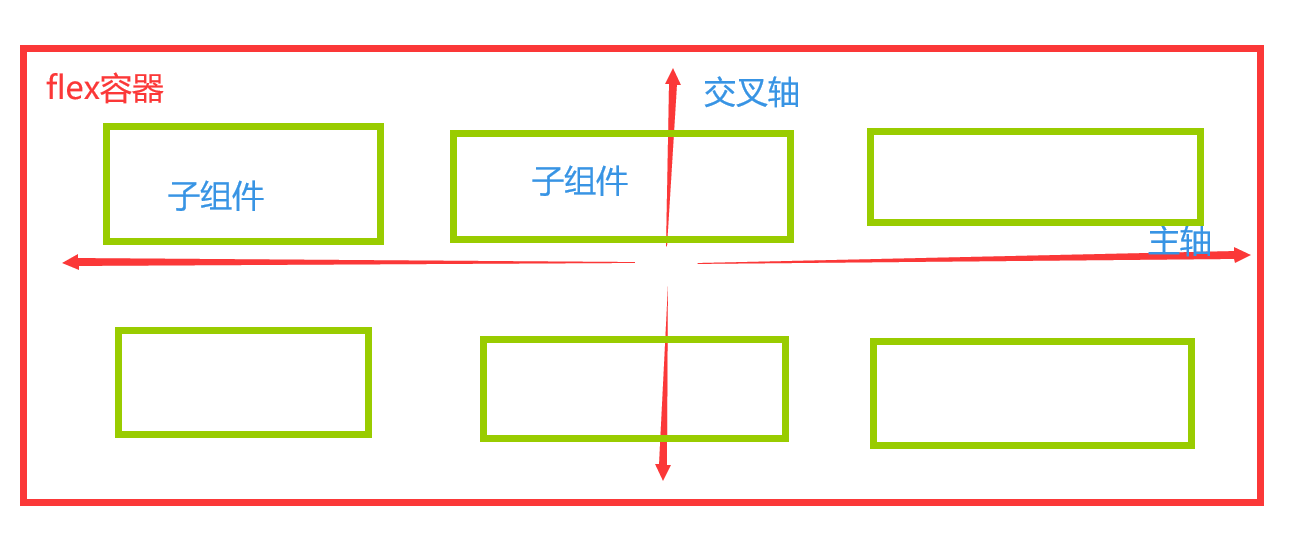本文主要是介绍基于机器学习的C-MAPSS涡扇发动机RUL预测,希望对大家解决编程问题提供一定的参考价值,需要的开发者们随着小编来一起学习吧!
美国国家航空航天局的商用模块化航空推进仿真系统(CMAPSS)所模拟出的涡扇发动机性能退化数据进行实验验证,数据中包含有风扇、涡轮、压气机等组件参数。C-MAPSS中所包含的数据集可以模拟出从海平面到42千英尺的高度,从0到0.9马赫的速度以及从60到100的油门杆角度。同时在每次循环的某一时间点开始会设置指定故障,并且故障在剩余循环继续存在,从而可以确定故障出现在哪一时刻,所以该数据集被普遍用作预测涡扇发动机RUL问题的基准数据集。
import numpy as np
import pandas as pd
import matplotlib.pyplot as plt
import seaborn as sns
from sklearn import linear_model
from sklearn.metrics import mean_squared_error, r2_score,mean_absolute_percentage_error
from sklearn.model_selection import cross_val_score
from sklearn.ensemble import RandomForestRegressor
from sklearn.neighbors import KNeighborsRegressor
from sklearn.tree import DecisionTreeRegressor
from sklearn.ensemble import GradientBoostingRegressor
import mplcyberpunk as cyberpunkImporting Data
index_names = ['id', 'cycle']
setting_names = ['setting_1', 'setting_2', 'setting_3']
sensor_list=[ "(Fan inlet temperature) (◦R)",
"(LPC outlet temperature) (◦R)",
"(HPC outlet temperature) (◦R)",
"(LPT outlet temperature) (◦R)",
"(Fan inlet Pressure) (psia)",
"(bypass-duct pressure) (psia)",
"(HPC outlet pressure) (psia)",
"(Physical fan speed) (rpm)",
"(Physical core speed) (rpm)",
"(Engine pressure ratio(P50/P2)",
"(HPC outlet Static pressure) (psia)",
"(Ratio of fuel flow to Ps30) (pps/psia)",
"(Corrected fan speed) (rpm)",
"(Corrected core speed) (rpm)",
"(Bypass Ratio) ",
"(Burner fuel-air ratio)",
"(Bleed Enthalpy)",
"(Required fan speed)",
"(Required fan conversion speed)",
"(High-pressure turbines Cool air flow)",
"(Low-pressure turbines Cool air flow)" ]
columns = index_names + setting_names + sensor_list
#print(len(columns))
train = pd.read_csv('train_FD001.txt',sep='\s+',names=columns)
test = pd.read_csv('test_FD001.txt',sep='\s+',header=None,index_col=False,names=columns)
test_res = pd.read_csv('RUL_FD001.txt',sep="\s+",header=None)Data Cleaning
df_train=train.copy()
df_test=test.copy()
print("Shape of dataset",df_train.shape)
print("Null values in dataset",df_train.isnull().sum())Shape of dataset (20631, 26)
Null values in dataset id 0
cycle 0
setting_1 0
setting_2 0
setting_3 0
(Fan inlet temperature) (◦R) 0
(LPC outlet temperature) (◦R) 0
(HPC outlet temperature) (◦R) 0
(LPT outlet temperature) (◦R) 0
(Fan inlet Pressure) (psia) 0
(bypass-duct pressure) (psia) 0
(HPC outlet pressure) (psia) 0
(Physical fan speed) (rpm) 0
(Physical core speed) (rpm) 0
(Engine pressure ratio(P50/P2) 0
(HPC outlet Static pressure) (psia) 0
(Ratio of fuel flow to Ps30) (pps/psia) 0
(Corrected fan speed) (rpm) 0
(Corrected core speed) (rpm) 0
(Bypass Ratio) 0
(Burner fuel-air ratio) 0
(Bleed Enthalpy) 0
(Required fan speed) 0
(Required fan conversion speed) 0
(High-pressure turbines Cool air flow) 0
(Low-pressure turbines Cool air flow) 0
dtype: int64
x = df_train[index_names].groupby('id').max()
#print(x)
plt.figure(figsize=(20,70))
ax= x['cycle'].plot(kind='barh',width=0.8)
plt.title('Engines LifeTime',size=40)
plt.xlabel('Cycles',size=30)
plt.xticks(size=15)
plt.ylabel('Engine_ID',size=30)
plt.yticks(size=15)
plt.grid(True)
plt.tight_layout()
plt.show()
sns.set_theme(style="whitegrid")
sns.displot(x['cycle'], kde=True, bins=20, height=6, aspect=2, color='blue')
plt.gca().lines[0].set_color('lime')
cyberpunk.make_lines_glow()
plt.xlabel('Max Cycle')
plt.show()
Data Filtering and Treatment
n = len(df_train)
y = list(df_train.groupby(['id'])['cycle'].max())
for i in range(len(y)):y[i] = int(y[i])
z = list(df_train['cycle'])
for i in range(n):z[i] = int(z[i])
ans = [0]*(n)
for i in range(n):ans[i] = y[df_train.iloc[i,0]-1] - z[i]
df_train['RUL'] = ans
train['RUL'] = ans
train
rem_col = list()
for i in range(df_train.shape[1]-1):cor = df_train["RUL"].corr(df_train.iloc[:,i])if -0.001<=cor<=0.001 or np.isnan(cor):rem_col.append(df_train.columns[i])
print(rem_col)['setting_3', '(Fan inlet temperature) (◦R)', '(Fan inlet Pressure) (psia)', '(Engine pressure ratio(P50/P2)', '(Burner fuel-air ratio)', '(Required fan speed)', '(Required fan conversion speed)']
plt.figure(figsize=(18,18))
sns.set_style("whitegrid", {"axes.facecolor": ".0"})
df_cluster2 = df_train.corr()
plot_kws={"s": 1}
sns.heatmap(train.corr(),cmap='RdYlBu',annot=True,linecolor='lightgrey').set_facecolor('white')
Since correlation of some of the columns are almost zero we will remove them from the dataset for a better training model.
df_train = df_train.drop(columns=rem_col)
df_train
Heatmap after removing unwanted columns
plt.figure(figsize=(18,18))
sns.set_style("whitegrid", {"axes.facecolor": ".0"})
df_cluster2 = df_train.corr()
plot_kws={"s": 1}
sns.heatmap(df_train.corr(),cmap='RdYlBu',annot=True,linecolor='lightgrey').set_facecolor('white')
Heatmap of the dataset showing correlation greater than 0.9.
threshold = 0.90
plt.figure(figsize=(10,10))sns.set_style("whitegrid", {"axes.facecolor": ".0"})
df_cluster2 = df_train.corr()
mask = df_cluster2.where((abs(df_cluster2) >= threshold)).isna()
plot_kws={"s": 1}
sns.heatmap(df_cluster2,cmap='RdYlBu',annot=True,mask=mask,linewidths=0.2,linecolor='lightgrey').set_facecolor('white')
rem_col_new = []
y =[]
for i in range(df_train.shape[1]):for j in range(i+1,df_train.shape[1]):corr = df_train.iloc[:,i].corr(df_train.iloc[:,j])if abs(corr)>=0.9:rem_col_new.append(df_train.columns[j])
rem_col_newdf_train = df_train.drop(columns=rem_col_new)
df_train
Columns having 2 unique values with a ratio greater or equal to 0.95 will be removed from the datset for a better training model.
uniq = list(df_train.nunique())
rem_column = []
for i in range(len(uniq)):if uniq[i]==2:x_un = df_train.iloc[:,i].unique()x1 = ((df_train[df_train.columns[i]]==x_un[0]).sum())/df_train.shape[0]x2 = ((df_train[df_train.columns[i]]==x_un[1]).sum())/df_train.shape[0]if x1/x2>0.95 or x2/x1>0.95:rem_column.append(df_train.columns[i])
rem_columndf_train = df_train.drop(columns=rem_column)
df_train
from sklearn.metrics import mean_squared_error, r2_scoredef error(test_res, y_pred):mse = mean_squared_error(test_res, y_pred)rmse = np.sqrt(mse)r2 = r2_score(test_res, y_pred)print(f"Mean squared error: {mse}")print(f"Root mean squared error: {rmse}")print(f"R-squared score: {r2}")return [r2,rmse]r_2_score = []
rmse = []
Method = []Linear Regression without dropping features/columns.
drop_col = ['RUL']X_train=train.drop(columns=drop_col).copy()
Y_train = df_train["RUL"]reg = linear_model.LinearRegression()
reg.fit(X_train, Y_train)
LinearRegression()X_test=test.copy()
ans = reg.predict(X_test)
df_test["Pred_RUL_LR_wrf"] = ans
rem = ["Pred_RUL_LR_wrf"]y_pred_LR_wrf = list(df_test.groupby(['id'])['Pred_RUL_LR_wrf'].min())
error_LR = error(test_res, y_pred_LR_wrf)
r_2_score.append(error_LR[0])
rmse.append(error_LR[1])
Method.append("LR_wrf")Mean squared error: 894.8305578921604
Root mean squared error: 29.91371855674517
R-squared score: 0.48181926539666886
Applying Linear Regression after removing features.
x_train=df_train.drop(columns=['RUL']).copy()
y_train = df_train["RUL"]
reg = linear_model.LinearRegression()
reg.fit(x_train, y_train)y_test = df_test.drop(columns = rem+rem_col+rem_col_new+rem_column).copy()
lin_pre = reg.predict(y_test)
df_test["Pred_RUL_LR_arf"] = lin_prey_pred_LR_arf = list(df_test.groupby(['id'])['Pred_RUL_LR_arf'].min())
f = error(test_res, y_pred_LR_arf)
r_2_score.append(f[0])
rmse.append(f[1])
Method.append("LR_arf")
rem.append("Pred_RUL_LR_arf")Mean squared error: 890.8276472071307
Root mean squared error: 29.846735955664073
R-squared score: 0.48413728100423403
Random Forest Regression before removing any features.
rf = RandomForestRegressor(max_features = "log2")
rf.fit(X_train, Y_train)
ans = rf.predict(X_test)
df_test["Pred_RUL_RF_wrf"] = ans
rem.append("Pred_RUL_RF_wrf")
y_pred_RF_wrf = list(df_test.groupby(['id'])['Pred_RUL_RF_wrf'].min())
f = error(test_res, y_pred_RF_wrf)
r_2_score.append(f[0])
rmse.append(f[1])
Method.append("RF_wrf")Mean squared error: 576.1797359999999
Root mean squared error: 24.00374420793556
R-squared score: 0.6663443863972125
Applying Random Forest Regression after removing features
rf = RandomForestRegressor(max_features = "log2")
rf.fit(x_train, y_train)
pre_rf = rf.predict(y_test)
df_test["Pred_RUL_RF_arf"] = pre_rf
y_pred_RF_arf = list(df_test.groupby(['id'])['Pred_RUL_RF_arf'].min())
f = error(test_res, y_pred_RF_arf)
r_2_score.append(f[0])
rmse.append(f[1])
Method.append("RF_arf")
rem.append("Pred_RUL_RF_arf")Mean squared error: 651.5577000000001
Root mean squared error: 25.525628297849988
R-squared score: 0.6226943250376287
KNN before removing features
model=KNeighborsRegressor(n_neighbors = 24)
model.fit(X_train, Y_train)
ans = model.predict(X_test)
df_test["Pred_RUL_KNN_wrf"] = ans
rem.append("Pred_RUL_KNN_wrf")
y_pred_KNN_wrf = list(df_test.groupby(['id'])['Pred_RUL_KNN_wrf'].min())
f = error(test_res, y_pred_KNN_wrf)
r_2_score.append(f[0])
rmse.append(f[1])
Method.append("KNN_wrf")Mean squared error: 969.0081597222222
Root mean squared error: 31.128895896292597
R-squared score: 0.4388643127875884
KNN after removing features
model = KNeighborsRegressor(n_neighbors = 78)
model.fit(x_train, y_train)
pre_KNN = model.predict(y_test)
df_test["Pred_RUL_KNN_arf"] = pre_KNN
y_pred_KNN_arf = list(df_test.groupby(['id'])['Pred_RUL_KNN_arf'].min())
f = error(test_res, y_pred_KNN_arf)
r_2_score.append(f[0])
rmse.append(f[1])
Method.append("KNN_arf")
rem.append("Pred_RUL_KNN_arf")Mean squared error: 940.5797731755424
Root mean squared error: 30.66887303399886
R-squared score: 0.45532669451385177
Gradient Boosting Regression before removing features
model=GradientBoostingRegressor(loss = "absolute_error",criterion = "squared_error",max_features = "sqrt")
model.fit(X_train, Y_train)
ans = model.predict(X_test)
df_test["Pred_RUL_GB_wrf"] = ans
rem.append("Pred_RUL_GB_wrf")
y_pred_GB_wrf = list(df_test.groupby(['id'])['Pred_RUL_GB_wrf'].min())
f = error(test_res, y_pred_GB_wrf)
r_2_score.append(f[0])
rmse.append(f[1])
Method.append("GB_wrf")Mean squared error: 549.1271065841099
Root mean squared error: 23.433461259150555
R-squared score: 0.6820100912170148
Gradient Boosting Regression after removing features
model=GradientBoostingRegressor(loss = "absolute_error",criterion = "squared_error",max_features = "log2")
model.fit(x_train, y_train)
pre_KNN = model.predict(y_test)
df_test["Pred_RUL_GBR_arf"] = pre_KNN
y_pred_GB_arf = list(df_test.groupby(['id'])['Pred_RUL_GBR_arf'].min())
f = error(test_res, y_pred_GB_arf)
r_2_score.append(f[0])
rmse.append(f[1])
Method.append("GBR_arf")
rem.append("Pred_RUL_GBR_arf")Mean squared error: 571.646562441639
Root mean squared error: 23.909131361085436
R-squared score: 0.6689694679658271
Deciding the final regression method for prediction
import numpy as np
import matplotlib.pyplot as plt
method = ["LR","RF","KNN","GB"]
X_axis = np.arange(len(method))
r2_score_wr = r_2_score[::2]
r2_score_r = r_2_score[1::2]
plt.figure(figsize = (11,8))
plt.bar(X_axis - 0.1, r2_score_wr, 0.2, label='Without removing features')
plt.bar(X_axis + 0.1, r2_score_r, 0.2, label='After removing features')plt.xticks(X_axis, method)
plt.xlabel("Methods")
plt.ylabel("R2-score")
plt.title("R2-score of applied method")
plt.legend(facecolor='white')for i in range(len(X_axis)):plt.text(X_axis[i] - 0.1, r2_score_wr[i] + 0.01, "{:.2f}".format(r2_score_wr[i]), ha='center', va='bottom')plt.text(X_axis[i] + 0.1, r2_score_r[i] + 0.01, "{:.2f}".format(r2_score_r[i]), ha='center', va='bottom')plt.gca().set_facecolor('white')plt.show()
maxi = r_2_score.index(max(r_2_score))
print("Maximum R2-score",max(r_2_score))
print("Best Regression method for this dataset is:",Method[maxi])x=[0]*(len(test_res))
for i in range(len(test_res)):x[i]=i+1
import matplotlib.pyplot as pltplt.figure(figsize = (16,8))plt.xlabel('Engine ID')
plt.ylabel('RUL')
plt.plot(x[30:40], test_res.iloc[30:40,0], label='Actual RUL',linestyle='dotted',marker='o')
plt.plot(x[30:40], y_pred_LR_wrf[30:40], label='Linear Regression',marker='o')
plt.plot(x[30:40], y_pred_RF_wrf[30:40], label='Random Forest',marker='o')
plt.plot(x[30:40], y_pred_KNN_wrf[30:40], label='KNN',marker='o')
plt.plot(x[30:40], y_pred_GB_wrf[30:40], label='Gradient Boosting',marker='o')plt.legend(facecolor='white')
plt.gca().set_facecolor('white')
plt.show()

工学博士,担任《Mechanical System and Signal Processing》《中国电机工程学报》《控制与决策》等期刊审稿专家,擅长领域:现代信号处理,机器学习,深度学习,数字孪生,时间序列分析,设备缺陷检测、设备异常检测、设备智能故障诊断与健康管理PHM等。
这篇关于基于机器学习的C-MAPSS涡扇发动机RUL预测的文章就介绍到这儿,希望我们推荐的文章对编程师们有所帮助!







